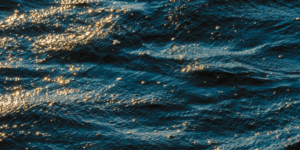A hydrophone is an underwater microphone designed to detect and record sound in water.
They’ve been around for more than 100 years! The first hydrophones were created in 1914 during World War I to help submarines avoid crashing into icebergs. While today’s hydrophones are much more advanced, they still work in similar ways.
Most modern hydrophones, like the icListen from Ocean Sonics, are made from ceramic materials. A key part of these hydrophones is a material called a piezoelectric compound. This material is what makes the hydrophone work by turning sound waves into electrical energy, allowing it to “listen” underwater.
The accuracy of a hydrophone depends on the quality of its piezoelectric element. This part flexes and changes shape when it senses pressure changes. This movement creates electric signals, which get recorded as sound data from the ocean. Piezoelectric materials have been used since the first hydrophones were invented and are still widely used today.
What is an Analog Hydrophone?
Older, or “analog,” hydrophones couldn’t provide real-time sound data. Scientists had to place the hydrophone in the water, then wait to pull it out, download the data, and analyze it. This process could take a long time and had risks of mistakes, like accidentally setting up the hydrophone in a noisy area.
What is a digital Hydrophone?
With digital hydrophones, like the icListen, things changed. These hydrophones can listen and process data instantly. People can hear and see the data in real-time, even while the hydrophone is still underwater. They can connect to these hydrophones through cables, radio, Wi-Fi, or satellite. This real-time access means people get better data more easily.
Smart hydrophones have made ocean listening much better. While some hydrophones still use older technology, the icListen and other smart hydrophones use powerful computer chips and artificial intelligence to help researchers make quick decisions. For example, during construction projects in the ocean, smart hydrophones can help detect marine mammals instantly.
Ocean Sonics, the company behind icListen, is a leader in underwater listening. Their hydrophones are used in many industries, from environmental monitoring to renewable energy and scientific research.
Glossary:
- Smart Hydrophone: A digital hydrophone that can collect and process sound data instantly, like the icListen.
- Digital Hydrophone: A hydrophone that turns sound into digital data at the source, making it smaller and easier to use.
- Analog Hydrophone: An older type of hydrophone that takes longer to process data.
To learn more about underwater acoustics visit https://dosits.org/


